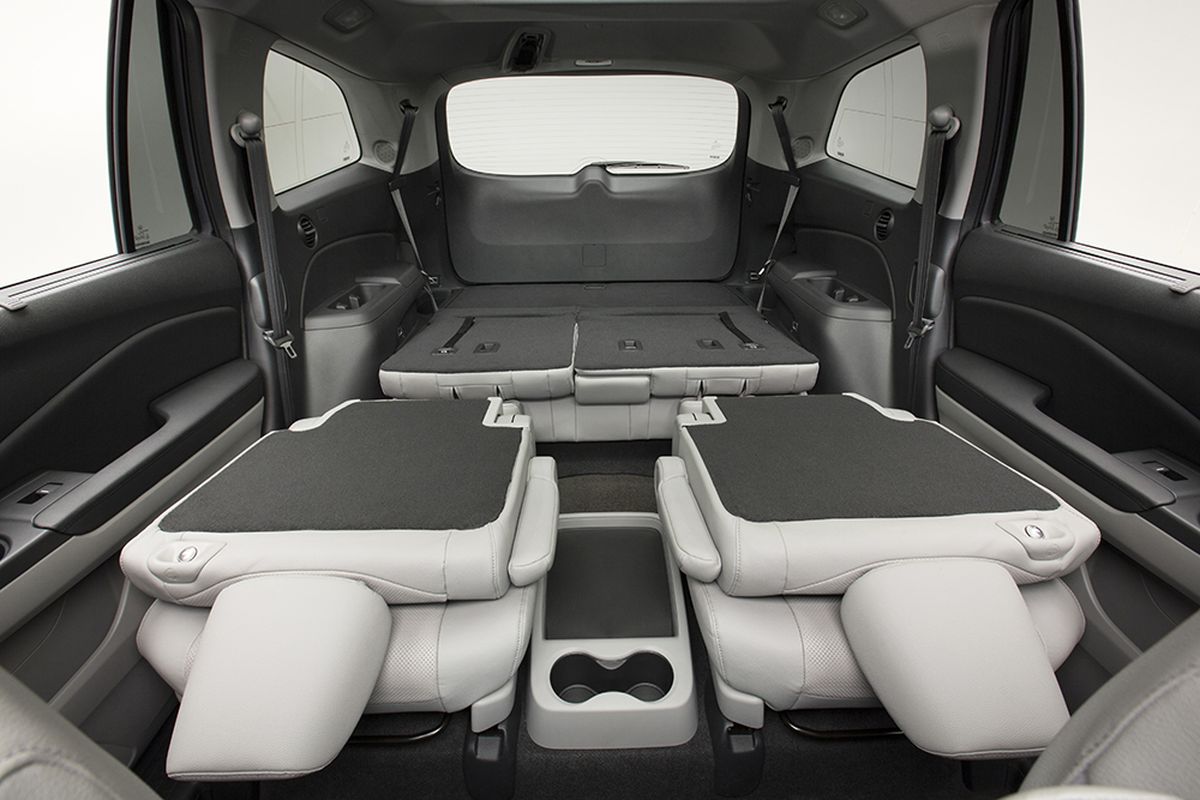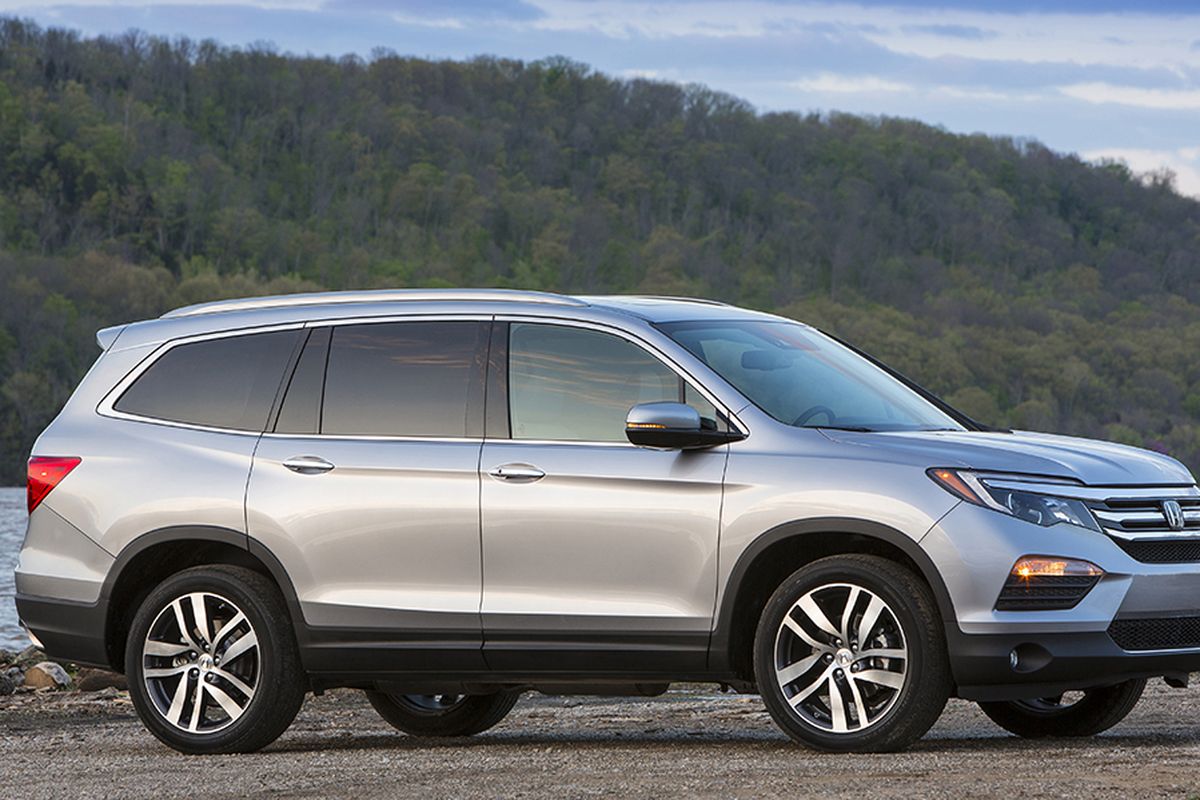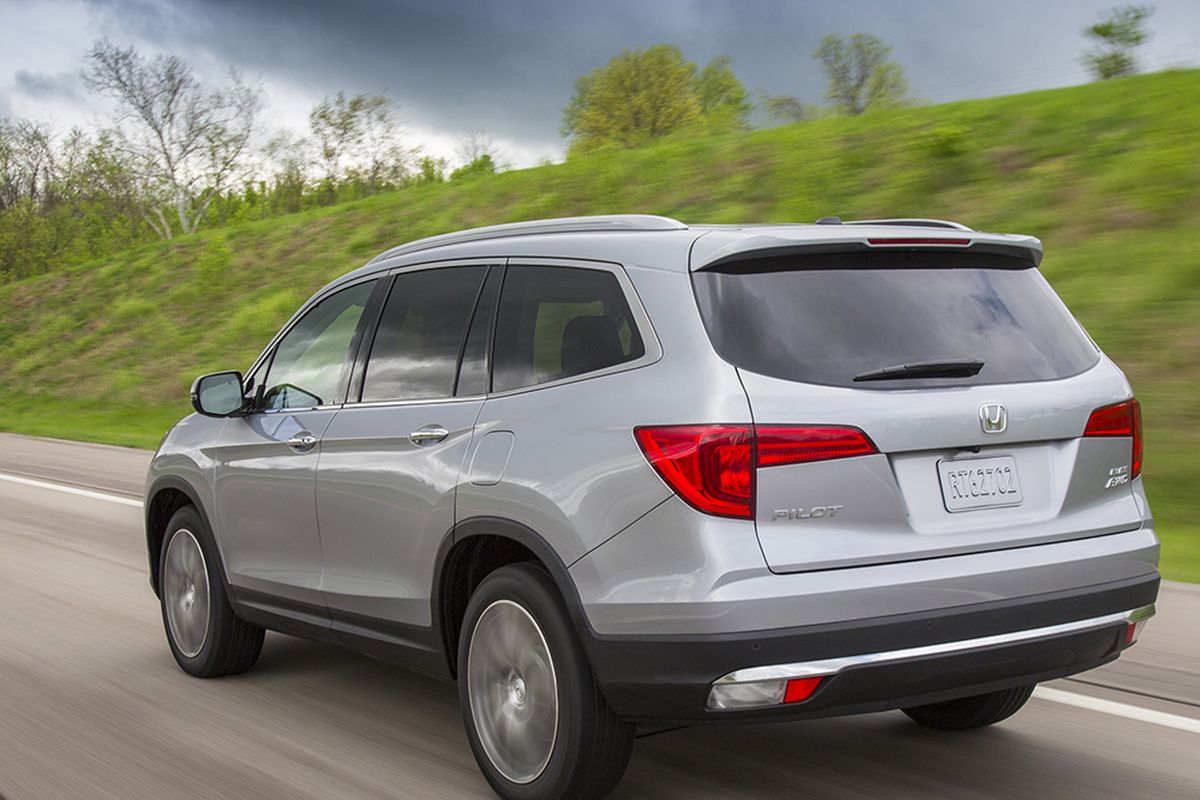Honda Pilot: Third generation is a charm
The Pilot is fully made-over this year. It’s curvier on the outside and friendlier within. Increased use of high-strength/lightweight steel in the body structure helps produce a weight loss of nearly 300 pounds. (Honda)
Like an automotive Dorian Gray, Honda’s midsize Pilot loses years as it ages.
The Pilot is fully made-over this year. It’s curvier on the outside and friendlier within. Increased use of high-strength/lightweight steel in the body structure helps produce a weight loss of nearly 300 pounds.
It’s not small, but the three-row crossover feels light on its feet. It’s more agile in traffic and easier to park. The steering system, retuned for a lighter feel, compounds the effect.
Twenty-inch wheels are available for the first time.
The third-generation Pilot receives an all-new 3.5-liter V-6 that makes 280 horsepower and 265 pound-feet of torque, up from 250/253. Properly equipped AWD trims can tow up to 5,000 pounds.
Upper trims receive a new nine-speed automatic transmission, which has been criticized for making slow, rough downshifts. It’s built by a third party and I’ve tested it in a number of vehicles, from both Honda/Acura and Jeep, and haven’t experienced the problem.
The new powertrain is efficient — even the heaviest Pilot, the new top-level Elite, earns estimated EPA ratings of 22 mpg combined/19 mpg city/26 mpg highway. Honda says it improves zero-to-60 times by 2 full seconds.
Front-wheel-drive is standard and the available all-wheel-drive system is reworked to anticipate traction loss, then proactively shift power to the wheels with optimal traction.
Ride quality is very good, with excellent damping over rough spots at speed, and body motion is well controlled.
Outside, Pilot’s once-blocky profile grows curvy and more dynamic. Inside, a sweeping, tiered dash replaces the old granitic slab.
The fully redesigned cabin (which, in upper trims, is best described as <em>near-luxury</em>) is more spacious and family friendly. Honda seems to have missed no opportunity to carved out another cupholder or random storage area. A broad new center console houses a deep cargo box with a recessed tambour lid. The lid’s non-slip surface provides sturdy footing for items placed there.
An 8-inch touchscreen display is control central for climate control, audio and navigation. The system eliminates a nest of buttons, but in the process complicates simple tasks.
Six adults can co-exist comfortably here — provided two are limber enough to negotiate the entry process. Optional on Pilot for the first time are second-row captains chairs that limit total seating to seven.
With all three rows in use, the cargo hold can accommodate a week’s worth of groceries, a weekend’s worth of soccer gear or the folding table for the church picnic.
Pilot trims range from the $30,875 (including destination) front-drive LX, or $32,675 for its AWD variant, to $47,300 for the AWD version of the Elite trim.
Standard gear includes rear privacy glass, air-conditioning, cruise control and active noise cancellation. There’s a rearview camera, Bluetooth phone and audio, an auxiliary jack and USB port.
Available safety features include forward-collision warning with automatic braking, adaptive cruise control, lane-departure warning and lane-keep assist. All are standard on upper trims, and optional on all but the base LX.
Would that we all could be younger than yesterday. Good for Pilot for pulling it off.
Contact Don at don@dadair.com.
2016 Honda Pilot AWD Elite
Vehicle base price: $29,995
Trim level base price: $46,420
As tested: $47,300
Options: The AWD Elite is a fully loaded trim. Our tester included no options.
Maximum tow rating: 5,000 pounds
EPA rating: 22 combined/19 city/ 26 highway
Unleaded regular fuel specified







